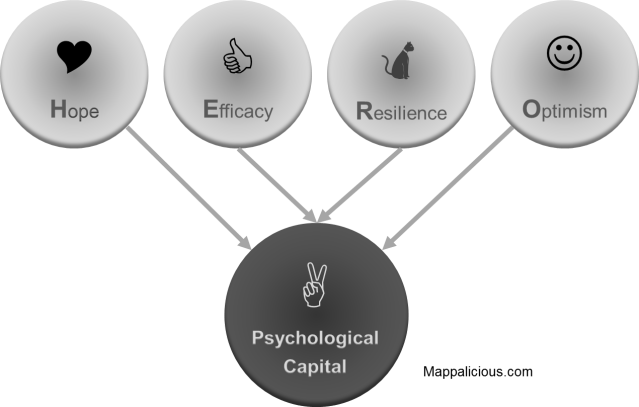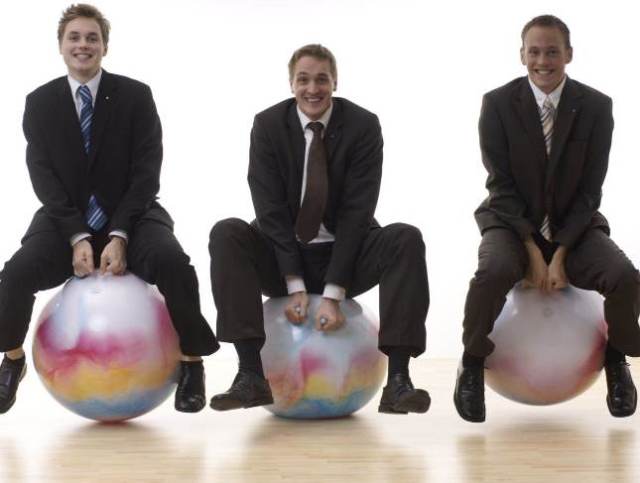 The community of positive psychology researchers has yet to agree on a generally accepted definition of positive interventions. While there are several definitions available that display a considerable overlap, there is still a lot of space for conceptual clarification (Parks & Biswas-Diener, 2013). I posit the following definition:
The community of positive psychology researchers has yet to agree on a generally accepted definition of positive interventions. While there are several definitions available that display a considerable overlap, there is still a lot of space for conceptual clarification (Parks & Biswas-Diener, 2013). I posit the following definition:
A positive intervention is an evidence-based, intentional act or series of actions (behavioral strategy) meant to increase (away from zero) that which causes or constitutes well-being and flourishing in non-clinical populations.
I will explicate the elements of positive interventions in the order they appear in the aforementioned definition.
Positive
The term “positive” in positive interventions defines the contextual and methodical framework that positive psychology operates on. On the contextual level, the target group of positive interventions are “normal people”, meaning humans from a non-clinical population (Seligman & Csíkszentmihályi, 2000). This represents a crucial difference to most therapeutic interventions that are designed to improve the condition of people suffering from a psychological disorder such as a depressive episode (Gable & Haidt, 2005). At the same time is has to be noticed that, in spite of this, there are studies that investigate the effectiveness of positive interventions for clinical populations (Duckworth, Steen, & Seligman, 2005). On the methodological level, positive interventions try to utilize positive phenomena of human cognition and emotion, such as pleasant feelings and memories, mindfulness, or the intentional use of character strengths and virtues (Peterson, 2006). Once again, this can be contrasted to interventions in clinical psychology, where “non-positive” methods such as the prescription of anti-depressants are custom. It is important to note that positive interventions (and positive psychology in general) do not prescribe a specific positive finite or ideal state of being. Rather, they can be characterized by a spirit that embraces constructive meliorism (Pawelski, 2005), the belief that humans can improve their condition no matter what. As such, positive psychology seeks to help people to reach their full potential, their individual best-possible life.
Evidence-based
Positive interventions are based on sound scientific research, ideally double-blind experiments using adequate control groups, as well as longitudinal evaluation studies (Seligman, 2002; Sin & Lyubomirsky, 2009). This represents an important modification compared to adjacent disciplines, such as humanistic psychology. While both disciplines share a lot of common ground pertaining their phenomena of interest, values, and goals, humanistic psychologists tend(ed) to be somewhat dismissive of large-scale empirical research (Seligman & Csíkszentmihályi, 2000). It is not unreasonable to say that methods akin to positive interventions were by and large confined to the large body of self-help literature up to the onset of the third century. Through positive psychology, they have finally entered the academic discourse for good.
Intentional Activity
Positive interventions seek to foster human agency, autonomy, and self-efficacy (Ryan, Huta, & Deci, 2008). The “active ingredient” of each intervention should reside within the individual, not in some external sphere. Therefore, a certain level of willpower, self-regulation and effort are needed for carrying out a positive intervention (Lyubomirsky & Layous, 2014). This postulate can once again be contrasted to the prescription of anti-depressants, where the desired effect is created by something that is external to the individual and cannot be influenced directly. This is a crucial aspect since many researchers try to find ways to deliver positive intervention in a “self-help” style, e.g., as an online assignment (Ouweneel, Le Blanc, & Schaufeli, 2013). Hence, it is paramount that positive interventions are relatively easy to carry out and rely on whatever resources an individual already disposes of before learning how to perform the intervention.
Away from zero/non-clinical Populations
This aspect once again alludes to the contextual domain of positive psychology. Interventions in clinical psychology are designed to help people reach a neutral (non-clinical) condition when they are perceived to be displaying a psychopathology. In short: their task is to relieve suffering (Seligman & Csíkszentmihályi, 2000). In a simple mathematical analogy, their aim is to get people from some negative number to (around) zero. On the contrary, positive interventions are meant to increase human well-being in the positive direction, away from zero. Yet, while this mathematical analogy is easy to grasp, it is also misleading to a certain extent. There is reason to believe that positive states (mental health, flourishing) and negative states (mental illness, suffering) are somewhat independent spheres of the human condition. It is not uncommon to experience elements of flourishing even when severely ill; and at the same time, it is also possible to display a lack of subjective well-being in spite of the absence of any psychopathology (Westerhof & Keyes, 2010). Therefore, when drawing on mathematical analogies, at the end of the day in may be more appropriate to assign a point in a Cartesian system to each person, rather than a point on a standalone continuum.
Causes or constitutes Well-being and Flourishing
Finally, positive interventions promote dimensions of human well-being, be it the psychological well-being model proposed by Ryff and Keyes (1995), Diener´s (2000) subjective well-being construct, or Seligman´s (2011) PERMA framework (or, for that matter, any adjacent concept). As such, the possible desired outcomes of positive interventions are manifold. They include positive emotions and cognitions such as happiness, satisfaction with life, autonomy and relatedness, experiences that foster engagement, e.g., the discovery and use of one´s character strengths, boosting the quality of one´s relationships, finding meaning and purpose in life, or higher levels of achievement. In addition, physical well-being should explicitly be included, since regular physical exercise is a viable approach to achieve psychological well-being as well (Fox, 1999).
The underlying Mechanics of Positive Interventions
While researchers in positive psychology have early on developed and empirically tested positive interventions (Seligman et al., 2005), the question of why and how these interventions actually work has only recently entered the academic discourse (Schueller, 2010). A current article by Lyubomirsky and Layous (2014) presents a preliminary model with regard to this question: The authors posit that encouraging people to complete positive interventions leads them to have higher levels of positive emotions, think more positive thoughts, and display more positive behaviors, which in turn results in increased well-being and improvement in life domains such as work, relationships, and health. While there seems to be a lot of truth to this explanation, it remains somewhat generic.
In this section of the article, I will therefore explicate my own outline of the mechanics behind positive interventions. This includes thinking about the underlying mechanisms as well as reporting some empirical findings on the question in what contexts and for which target groups they work best. To start, I´d like to repeat the definition of positive interventions given in the previous section: A positive intervention is an evidence-based, intentional act or series of actions (a behavioral strategy) meant to increase (away from zero) that which causes or constitutes well-being and flourishing in non-clinical populations. The most important part of this definition for the upcoming section is: “intentional act”. These words represent two of the general principles that underlie the functioning of all positive interventions: a) focusing our attention on a specific positive matter of interest; and b) getting us to actively change our behavior along the line of self-defined goals.
The importance of the first component – focusing our attention – was already proposed by the “father of American psychology”, William James (1890/1923, p. 424): “The faculty of voluntarily bringing back a wandering attention, over and over again, is the very root of judgment, character, and will […] (1890/1923, p. 424). Therefore, it is reasonable to assume that intentionally focusing our attention on the good things in life will result in an increased level of positive emotion. This relationship holds true for several variations of meditation practice, such as mindfulness-based meditation (Brown & Ryan, 2003) and loving-kindness meditation (Fredrickson, Cohn, Coffey, Pek, & Finkel, 2008).
The beneficial effect of the second component – taking deliberate action – is equally backed by extant research. There is abundant evidence for the proposition that building one´s feeling of agency and being in control is accompanied by feelings of autonomy, which over time leads to an increase in well-being (Ryan, Huta, & Deci, 2008). Implicitly embedded in the notion of carrying out an intentional act is the connotation that there has to be some kind of goal that one strives to attain. Goal-setting theory (Locke, 1996) posits that having clear and attainable goals, and receiving goal-related feedback frequently, raises the likelihood of actually reaching our goals – which in turn leads to higher levels of self-efficacy (Maddux, 2009) – which then raises the likelihood of achieving one´s goals in the future. And attaining one´s personal goals, at the end of the day, yields a sense of accomplishment, purpose, and meaning in life (Brunstein, 1993; Sheldon & Elliot, 1999; Emmons, 2003).
In summary, the mechanics that underlie the efficacy of positive interventions can be integrated as follows: completing positive interventions leads humans to have higher levels of positive emotions, think more positive thoughts, and display more positive behaviors via focusing their attention on the good things in life, enabling them to attain meaningful goals, thereby strengthening their feeling of agency and self-efficacy, which nurtures their sense of achievement and purpose in life.
References
Brown, K. W., & Ryan, R. M. (2003). The benefits of being present: mindfulness and its role in psychological well-being. Journal of Personality and Social Psychology, 84(4), 822-848.
Brunstein, J. C. (1993). Personal goals and subjective well-being: A longitudinal study. Journal of Personality and Social Psychology, 65(5), 1061-1070.
Diener, E. (2000). Subjective well-being: The science of happiness and a proposal for a national index. American Psychologist, 55(1), 34-43.
Duckworth, A. L., Steen, T. A., & Seligman, M. E. (2005). Positive psychology in clinical practice. Annual Review of Clinical Psychology, 1, 629-651.
Emmons, R. A., (2003). Personal goals, life meaning, and virtue: Wellsprings of a positive life. In C. Keyes & J. Haidt (Eds.), Flourishing: Positive psychology and the well-lived life (pp. 105-128). Washington: American Psychological Association.
Fox, K. R. (1999). The influence of physical activity on mental well-being. Public Health Nutrition, 2(3a), 411-418.
Fredrickson, B. L., Cohn, M. A., Coffey, K. A., Pek, J., & Finkel, S. M. (2008). Open hearts build lives: positive emotions, induced through loving-kindness meditation, build consequential personal resources. Journal of Personality and Social Psychology, 95(5), 1045-1062.
Gable, S. L., & Haidt, J. (2005). What (and why) is positive psychology?. Review of General Psychology, 9(2), 103-110.
James, W. (1890/1923). The principles of psychology. New York: Holt.
Lyubomirsky, S., & Layous, K. (2014). The how, why, what, when, and who of happiness. In J. Gruber & J. Moscowitz (Eds.), Positive emotion: Integrating the light sides and dark sides (pp. 473-495). New York: Oxford University Press.
Maddux, J. E. (2009). Self-efficacy: The power of believing you can. In S. J. Lopez & C. R. Snyder (Eds.), Oxford Handbook of Positive Psychology, 2nd edition (pp. 335-343). New York: Oxford University Press.
Ouweneel, E., Le Blanc, P. M., & Schaufeli, W. B. (2013). Do-it-yourself: An online positive psychology intervention to promote positive emotions, self-efficacy, and engagement at work. Career Development International, 18(2), 173-195.
Parks, A. C., & Biswas-Diener, R. (2013). Positive interventions: Past, present and future. In T. Kashdan, & J. Ciarrochi (Eds.), Mindfulness, acceptance, and positive psychology: The seven foundations of well-being (pp. 140-165). Oakland, CA: New Harbinger.
Pawelski, J. O. (2005). Mitigation and construction: Toward a balanced meliorism. Unpublished manuscript, University of Pennsylvania.
Peterson, C. (2006). A primer in positive psychology. New York: Oxford University Press.
Ryan, R. M., Huta, V., & Deci, E. L. (2008). Living well: A self-determination theory perspective on eudaimonia. Journal of Happiness Studies, 9(1), 139-170.
Ryff, C. D., & Keyes, C. L. M. (1995). The structure of psychological well-being revisited. Journal of Personality and Social Psychology, 69(4), 719-727.
Schueller, S. M. (2010). Preferences for positive psychology exercises. Journal of Positive Psychology, 5(3), 192-203.
Seligman, M. E. (2002). Authentic happiness. New York: Free Press.
Seligman, M. E., & Csikszentmihalyi, M. (2000). Positive psychology: an introduction. American Psychologist, 55(1), 5-14.
Seligman, M. E., Steen, T. A., Park, N., & Peterson, C. (2005). Positive psychology progress: empirical validation of interventions. American Psychologist, 60(5), 410-421.
Sheldon, K. M., & Elliot, A. J. (1999). Goal striving, need satisfaction, and longitudinal well-being: the self-concordance model. Journal of Personality and Social Psychology, 76(3), 482-497.
Sin, N. L., & Lyubomirsky, S. (2009). Enhancing well-being and alleviating depressive symptoms with positive psychology interventions: A practice-friendly meta-analysis. Journal of Clinical Psychology, 65(5), 467-487.
Westerhof, G. J., & Keyes, C. L. (2010). Mental illness and mental health: The two continua model across the lifespan. Journal of Adult Development, 17(2), 110-119.
Foto credit: https://unsplash.com/@laurenpengg96
 In Germany, chimney sweepers are seen as symbols of good luck (as is some other countries, too) – especially rubbing one of the golden buttons of their traditional uniforms. Therefore, in the beginning of the year, they parade through the streets and give candy to children. Today, I was able to take this photo as a bunch of them were lining up for the local newspaper. That’s a lot of luck in one picture! 🙂
In Germany, chimney sweepers are seen as symbols of good luck (as is some other countries, too) – especially rubbing one of the golden buttons of their traditional uniforms. Therefore, in the beginning of the year, they parade through the streets and give candy to children. Today, I was able to take this photo as a bunch of them were lining up for the local newspaper. That’s a lot of luck in one picture! 🙂








